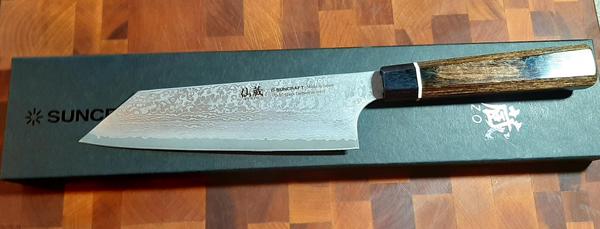So I don't usually buy damascus clad knives. Performance it most important to me. Most of my knives are simply finished, so I don't have to worry about the inevitable scratches from rags, sharpening, thinning etc. But recently I had the opportunity to buy a Shiro Kama R2 damascus. I have been coveting these for a little while. I like R2 steel, the Shiro Kama version is a bit thicker in the spine coming out of the handle, and the gun-metal gray damascus looks cool as s**t. It arrived in the mail yesterday. The edge was in decent shape, but I gave it a touch up. The grind looked good, nice and thin bte. and some convexity on the right side, so I was looking forward to taking it out for a spin.
It bit into produce very nicely, tackled dicing small handfuls very smoothly, but in some medium sized Spanish onions, I felt some pretty considerable drag, both in horizontaland vertical cuts. When I wiped the blade with a towel the drag was also evident.
My question is this....can I improve performance by polishing along the secondary bevel? Any other suggestion?
It bit into produce very nicely, tackled dicing small handfuls very smoothly, but in some medium sized Spanish onions, I felt some pretty considerable drag, both in horizontaland vertical cuts. When I wiped the blade with a towel the drag was also evident.
My question is this....can I improve performance by polishing along the secondary bevel? Any other suggestion?















